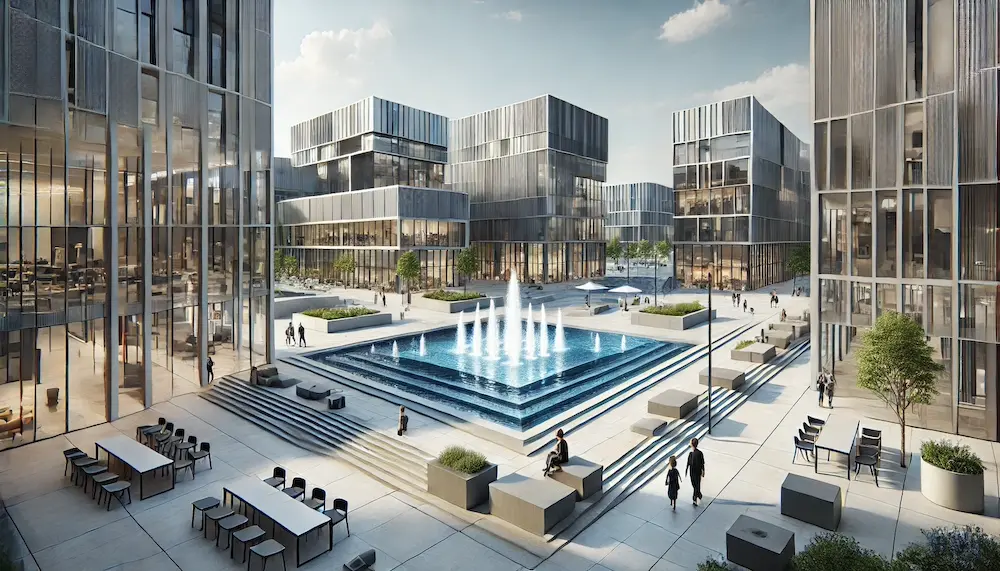Modernist squares, emerging prominently in the 20th century, reflect the principles of Modernist architecture and urban planning. Characterized by minimalist aesthetics, functionality, and open spaces, these squares have reshaped urban landscapes, emphasizing the relationship between form and purpose.
History and Origins of Modernist Squares
The Modernist movement, gaining momentum in the early 1900s, sought to break away from traditional architectural styles, focusing instead on innovation, simplicity, and the use of new materials. Urban planners and architects aimed to create spaces that were not only aesthetically pleasing but also functional and accessible. This philosophy extended to public squares, which were redesigned to serve as multifunctional hubs within cities.
Key Features of Modernist Squares
- Minimalist Design: Emphasis on clean lines, geometric shapes, and the absence of excessive ornamentation.
- Functional Spaces: Designed to accommodate various activities, from social gatherings to public events.
- Integration with Urban Fabric: Seamlessly connected with surrounding infrastructure, promoting accessibility and flow.
- Use of Modern Materials: Incorporation of steel, glass, and concrete to achieve innovative structural forms.
Applications of Modernist Squares
Modernist squares have been implemented worldwide, serving as central points for civic engagement, cultural events, and daily social interactions. Notable examples include:
- Nathan Phillips Square in Toronto: Adjacent to Toronto City Hall, this square exemplifies Modernist design with its open space, reflecting pool, and minimalist aesthetic.
- Superkilen Urban Park in Copenhagen: A contemporary public space that combines Modernist principles with vibrant cultural expressions, featuring distinct zones designed for community interaction.
Considerations When Designing Modernist Squares
- Community Engagement: Ensuring the space meets the needs and desires of the local population.
- Sustainability: Incorporating eco-friendly materials and practices to promote environmental responsibility.
- Flexibility: Designing adaptable spaces that can host a variety of events and activities.
Conclusion
Modernist squares represent a significant evolution in urban design, prioritizing functionality, simplicity, and integration within the urban environment. These spaces continue to influence contemporary public space design, reflecting the enduring legacy of Modernist principles in architecture and urban planning.
